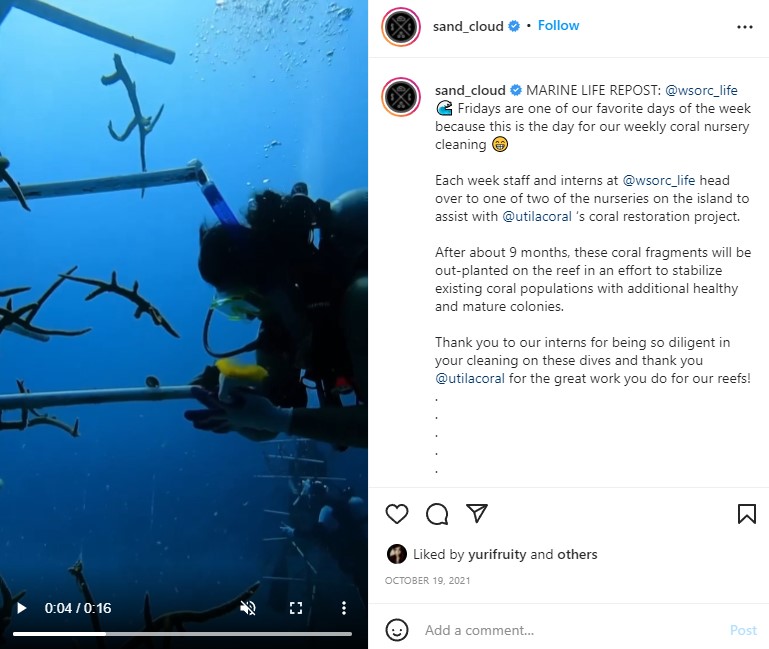Today, marketers are dealing with more competition for ads on one end, and audiences who are less receptive to ads on the other. The result? The cost per acquisition of customers (CPAs) are going up and great sales or conversion results are coming harder to come by.
So, what can we do?
The key is earning audience trust. 83% of people say they trust the recommendations of friends and family. Customers are also 71% more likely to buy products and services from social media referrals. Basically, trust, authenticity, and peer-endorsement matter now more than ever.
This is where a brand ambassador can be a powerful asset.
What Is a Brand Ambassador?

A brand ambassador is someone that represents a company and/or advocates on their behalf by promoting them and their products or services.
Years ago we generally saw ‘brand ambassadors’ as celebrities and influencers who’d promote a company or its products/services. It was a way for brands to connect with audiences by using someone people knew and liked. It was a way to build authenticity.
Today’s brand ambassadorship is very different. Instead of relying on one marquee personality, you’re leveraging many otherwise regular people. Audiences trust people they personally know or can directly relate to. In a way, the advocacy works at a more subtle or deeper level.
Types of Brand Ambassadors
Influencers
You’re probably familiar with influencers the most. In a way, they were the first people brands relied on outside of big celebrities. However, like celebrities, the relationship between brands and influencers is generally transactional and temporary.
Experts
People trust expert opinions. For example, 81% of customers said they trust the information they get from blogs. You can get experts to review your products and services. You can even ask them to incorporate your solutions into their workflow. If they like your product or service they may advocate for it to their audiences in the future.
Customers
Today, customers are increasingly becoming brand ambassadors through action. When they write reviews, talk about companies, or even promote products and services, they are actually advocating for brands. This is customer advocacy.
However, a key benefit of customer advocacy is that they carry an incredible amount of trust and authenticity with people. To audiences, a customer advocate is both neutral and relatable, and their thoughts on a company and its products/services matter.
Affiliates
Like influencers, an affiliate brand ambassador has a transactional relationship with a company.
It’s usually programmatic where the ambassador will talk about a product through content like a video or blog. They would have an affiliate link that audiences could check out. If someone buys the product through that link, the ambassador would get a commission.
What Does a Brand Ambassador Do?
Brand ambassadors represent and/or advocate for companies. They can be customers, experts, influencers, partners and even employees.
Advantages and Disadvantages of Brand Ambassadors

Advantages
Brand ambassadors offer a lot of benefits to companies, such as:
Giving a Human Touch
Brand ambassadors give customers a relatable personality they can engage with, especially if it’s someone they know like a friend or family member.
Expanding Your Reach on Social
Your marketing teams can reach audiences your official brand accounts don’t have access to through the networks of brand ambassadors.
Building Authenticity and Trust
People trust other people more than official brand accounts. For example, a Nielsen study found that 92% of consumers trust recommendations from family and friends over advertising.
Boosting Content Creation
Your brand ambassadors can be great content sources in themselves. Customers write reviews and feature products in their own guides and how-to’s, for example. Employees also create their own content when they showcase what they’ve been doing at their workplace.
Disadvantages
Getting a Start
There’s no reason not to have a brand ambassador program. However, the drawback of using this strategy is that the starting point isn’t always clear cut.
We offer a guide on how to launch a brand ambassador program. But the solution here rests on setting clear goals, finding the right ambassadors, providing training to your brand ambassadors and tracking performance as well as offering incentives.
Who Can be a Brand Ambassador?

The key to unlocking the benefit of brand ambassadors is to not limit your focus.
When starting, some companies might be tempted to reach out to influencers. But this isn’t very different from approaching celebrities, and you’ll run into some roadblocks.
Audiences are only getting more savvy with reading the situation. They know when it’s a brand speaking versus a real person. You don’t want spokespeople – so look far and deep.
Customers
Customers are a great starting point. People want to know what their peers think about a brand and its products and services. In fact, many of your customers are already advocating for your brand. You just need to leverage and grow the activity already out there.
Content Creators
Working with content creators is a good way to tap into ‘expert’ brand ambassadors. Look for people who’ve built trust and credibility with your audience. This can include thought leaders, reviewers and other resources people generally rely on to make their purchasing decisions.
Employees
Your employees can also be great brand ambassadors. They can give prospective hires a great look into how your company works. This window can give you a leg up in talent acquisition. You can also leverage your employees’ expertise and use them as thought leaders to build credibility with potential leads and customers.
How to Find Brand Ambassadors
The temptation might be to look outside for ‘obvious’ candidates. But the optimal strategy could be to look internally or closer to home.
The people with the greatest credibility and authenticity might not be the biggest TikTok, IG or YouTube personalities. Rather, the ones best positioned to build trust with your target audience could be your customers, partners and employees.
How Do You Track and Drive Results?
When it comes to social, a brand ambassador drives results through their engagement and reach. You’ll want tools that can track earned media value (EMV) metrics (such as the value your company puts on social shares, comments, etc).
Once you have that data, you’ll see who your strongest ambassadors are as well as your most effective content, post types and other details.
Examples of Companies with Brand Ambassadors
Sand Cloud
Sand Cloud leverages its customers as brand ambassadors to showcase how people can use the company’s products.

They also showcase their values (supporting marine life) and closely work with their partners to promote common causes.

Canon USA
It shouldn’t be a surprise that Canon’s sticking to the principle, “a picture speaks louder than a thousand words.” Instead of only talking about its products, Canon is leveraging user-generated content (UGC) to show exactly how their goods perform in real life.

Amazon Web Services (AWS)
AWS gives potential leads and customers a window into the teams and people they could one day work with. It also uses spotlights like this to showcase internal expertise, team dynamics, and company culture.

Dell Technologies
The interesting thing about this specific example is that Dell is achieving multiple outcomes.
First, it’s leaning on an expert to weigh in on a conversation Dell wants to enter. Second, Dell is using the discussion to showcase an aspect of its company culture. Third, it’s leveraging one of its senior employees as a thought leader.

HubSpot
In this example, HubSpot’s brand ambassador is its top executive. The company is leaning on Yamini Rangan’s status as a sought-out thought leader to drive credibility.








